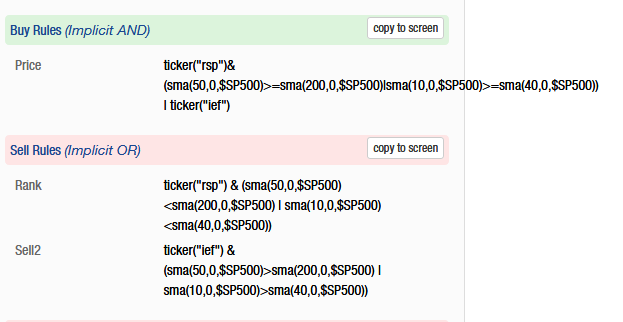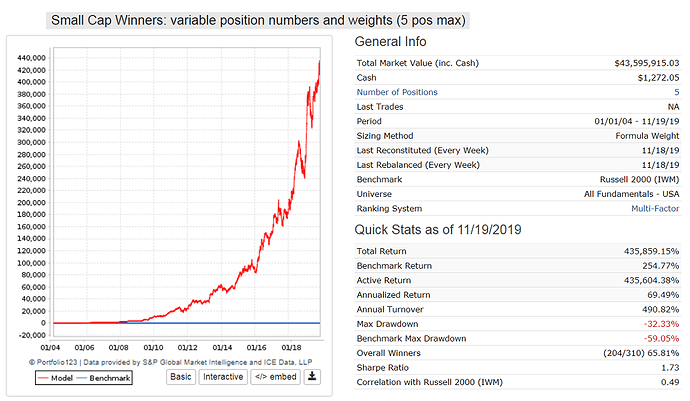Yuval, the odds you quote are correct.
But for people who are not too greedy they can follow a simple S&P500 momentum strategy with equity (RSP) and fixed income (IEF). Nothing spectacular or unknown here. Everybody is familiar with the 50-200 golden cross, and I have added a shorter term 10-40 momentum as well.
Buy1: ticker(“rsp”)&(sma(50,0,$SP500)>=sma(200,0,$SP500)|sma(10,0,$SP500)>=sma(40,0,$SP500)) | ticker(“ief”)
Sell1: ticker(“rsp”) & (sma(50,0,$SP500)<sma(200,0,$SP500) | sma(10,0,$SP500)<sma(40,0,$SP500))
Sell2: ticker(“ief”) & (sma(50,0,$SP500)>sma(200,0,$SP500) | sma(10,0,$SP500)>sma(40,0,$SP500))
P123 ranking system: ETF Rotation - Conservative
Variable slippage
reconstitution and rebalancing weekly
Weight formula = 1
From Jan-99 to Nov-2019 this model shows an annualized return of 14.70% with a max D/D= -19.0% and Sharpe= 1.41.
Standard Deviation 8.73% vs 14.40% for SPY.
It would never have had a loss over any of the 20 calendar years. If one ran a fund based on this simple model you would have made a lot of money, because I don’t know of any fund manager doing better than this. Also there were only a total of 155 realized trades in this 20-year period.
That is why I don’t share the opinion of many that market timing does not work. You can add this model to your Portfolio123 Models lineup, if you wish - it will not disappoint, a lot less riskier than stock-picking.
year … return %
1999 … 6.27
2000 … 14.39
2001 … 11.26
2002 … 14.62
2003 … 39.39
2004 … 12.16
2005 … 17.94
2006 … 15.82
2007 … 10.61
2008 … 24.90
2009 … 16.65
2010 … 13.52
2011 … 3.46
2012 … 11.79
2013 … 33.48
2014 … 8.26
2015 … 11.34
2016 … 8.84
2017 … 15.36
2018 … 11.62
2019 … 11.04





